At present, almost all TLC SSDs use the SLC Cache technology to enhance the user experience. When the Plextor M7V was just launched, I have already done M7VC 512G evaluation. The test found that M7V is also inevitable. The SLC Cache (Plexcott official name is "PlexNitro performance optimization buffer technology", but in the official data also appeared in the "SLC Mode" to optimize the performance of the statement). From the official data, we can see that the capacity of SLC Cache of M7V with a capacity of 512G is 6GB, and the size of SLC Cache of 256G with M7V is 3GB. I did not have a 256G version of M7VC, but only a 256G version of M7VG (M7VC is a SATA3 interface, and M7VG is an M.2 interface). Therefore, it is impossible to compare the performance of different capacity SLC Caches on the performance of TLC SSDs. Recently, the company installed a new machine needs to start SSD, they got a few M7VC 256G, just the most direct data comparison with the previous M7VC 512G.
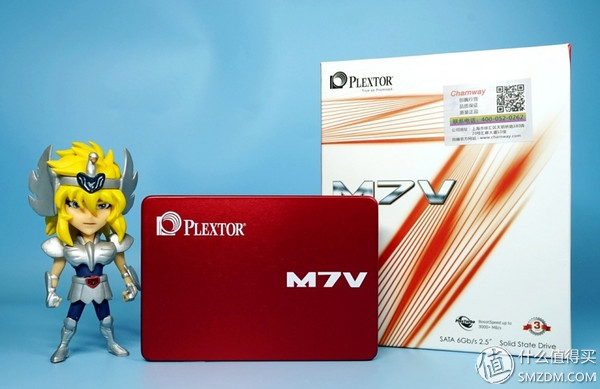
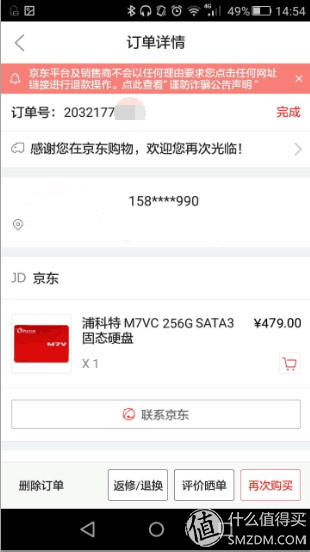
Friendly reminder, Pu Kete M7VC 256G is 479 yuan in Jingdong, but can be bought on Taobao 459 yuan, the province 20 yuan. Because I want to use the Jingdong Card, I bought it on my own.
★ Unpacking ★

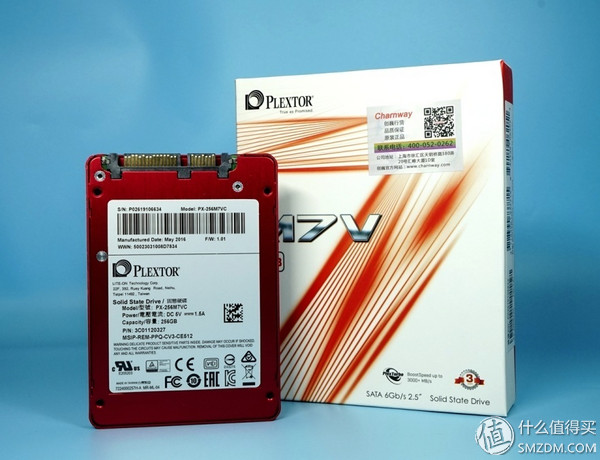
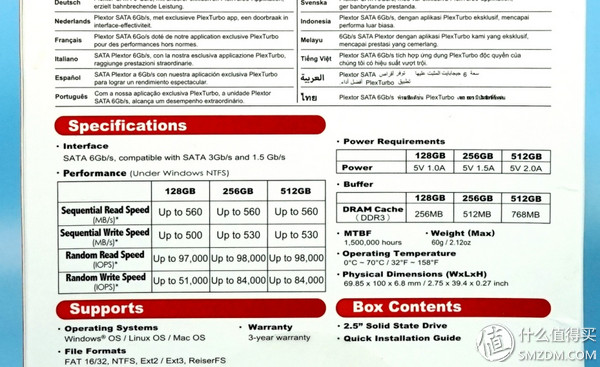
Plextor M7VC 256G package exactly the same as the previous 512G, the back of the box indicates the parameters of the cache, voltage, current, maximum read and write speed, MTBF and other parameters of the M7V series of different capacity SSD, M7V series has a total of three capacity Version: 128G, 256G, 512G, 128G cache is 256MB, 256G cache is 512MB, 512G cache is 768MB. Old drivers who have used SSDs will know that the same series of SSDs generally have higher capacity and stronger performance, which is more related to the use of NAND granules in large-capacity versions. Judging from the nominal parameters of the box, the 256G and 512G versions of the M7VC are basically the same in performance, but theoretically speaking, the larger the SLC cache space, the stronger the performance of the SSD should be. Compare the performance gap between two different capacity M7VCs.
★ Dismantlement ★
International practice, hot air blown off the warranty label, pay attention to be careful, the current warranty labels are fragile, broken no warranty, the hot air after the mad blow at a close lightly. Please be careful when you put it back. If it is not tight enough, you can blow it with hot air and press it tightly. After unscrewing the four small screws on the aluminum alloy housing, the SSD housing can be disassembled.
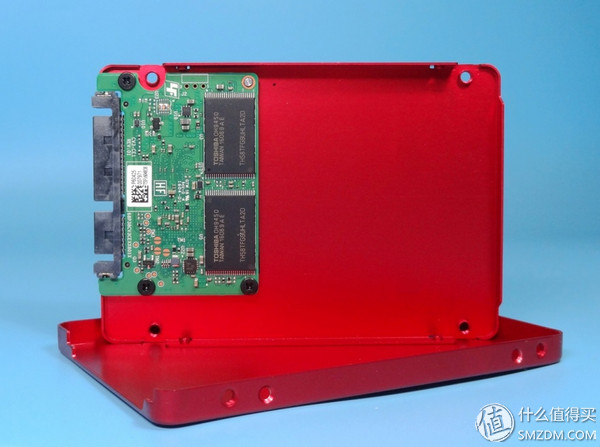
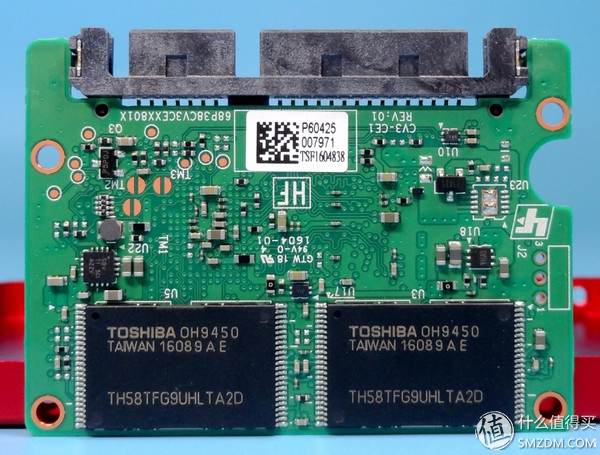
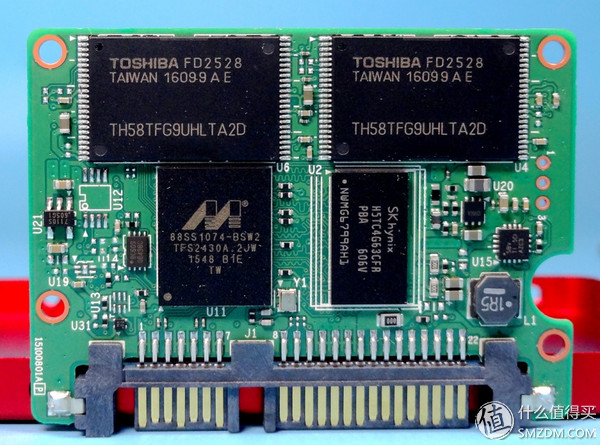
The 256G version of the M7VC is much smaller than the previous 512G version of the PCB. It belongs to the mini type, and is still a green PCB. The front side is a master chip + a cache particle + two NAND particles, and the back is two NAND particles. The main control chip is also the fifth generation of Marvell's SATA four-channel master 88SS1074B1, the highest can only support 512G capacity. The buffer particles were changed from the previous South Asian particles to Hynix DDR3L particles, numbered H5TC4G63CFR-PBA, with a single capacity of 512 MB, a frequency of 1600 MHz, and CL=11.
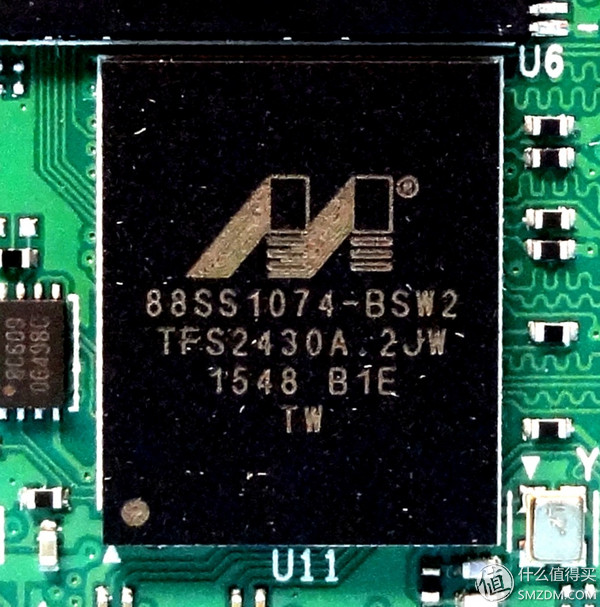
(Marvell's SATA Master 88SS1074B1)
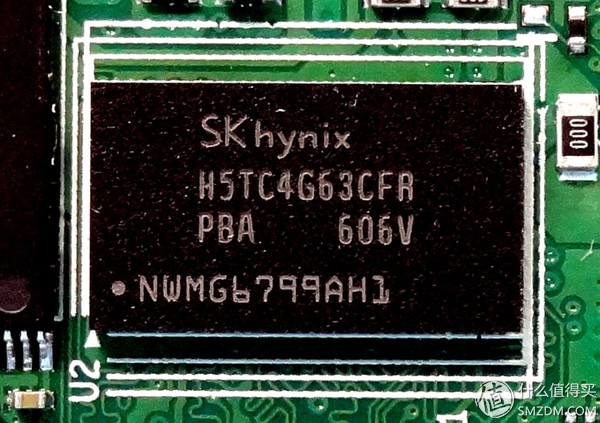
(Hynix DDR3L cache particles)
NAND particle number TH58TFG9UHLTA2D, from the number point of view, is Toshiba original TSOP package Toggle NAND, a process of 15nm, belonging to the enterprise-level eTLC, single capacity of 64GB, a total of 4 composed of 256G of the total capacity.


★ Test article ★
In many previous evaluations, I have already explained the SLC Cache technology. Here's a quick recap. The principle of SLC Cache technology is the same as using a memory as a hard disk cache. Why is it called SLC Cache? First of all, from the storage mechanism, SLC stores 1 bit of data in each memory cell of a NAND flash memory. The MLC is 2 bits, and the TLC is 3 bits. Therefore, SLC>MLC>TLC in terms of writing speed. If you use three storage units on TLC, each using only 1 bit of storage space, then you can approach or achieve SLC speed at theoretical speed, but you will waste the remaining storage space. In order to improve the experience of using TLC SSDs, manufacturers use a part of the TLC as an SLC to use only 1 bit of storage space and use only 1 bit of the 3 bits of the TLC. Therefore, a virtual 1 GB SLC requires 3 GB of TLC. In other words, if it is a 300G TLC SSD, all of them can be used as SLC and only 100G of capacity can be used. If it is an MLC analog SLC, half of the capacity is wasted. Before GALAXY, there was a freak SSD that used MLC to simulate SLC. The actual NAND capacity is 512G, and the user can use only 256G, but the read and write speed is very fast. Therefore, using TLC to simulate SLC, if it is a full-scale simulation, requires three times the capacity and the cost is too high. The manufacturer simulates some of the TLCs as SLCs and uses this faster space as a full cache. In other words, if the user's data is less than the SLC cache space, you can get a speed experience close to the SLC. After the cache space is exceeded, you must rely on the master to timely clear the cached data to free up more cache space. If the data is continuously written and the master processing capacity is exceeded, it can only be written into the ordinary TLC space, and the speed will return to the true level of the TLC.
1. Theoretical performance testing of conventional software:
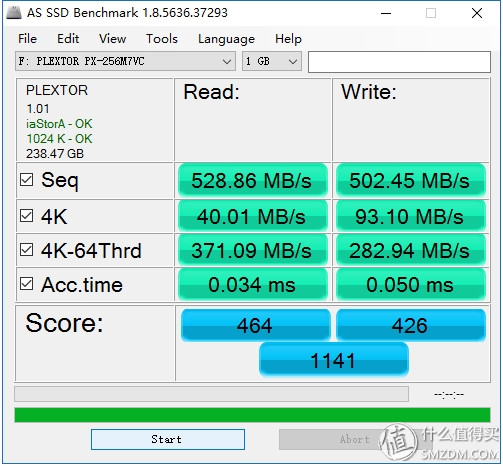
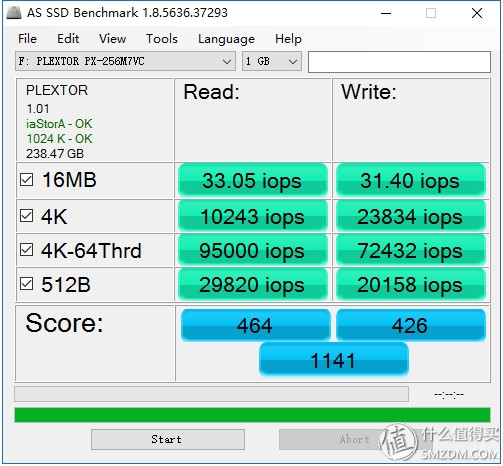
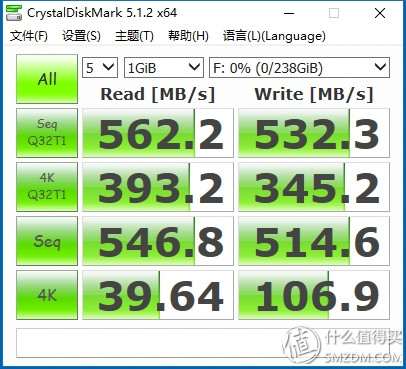
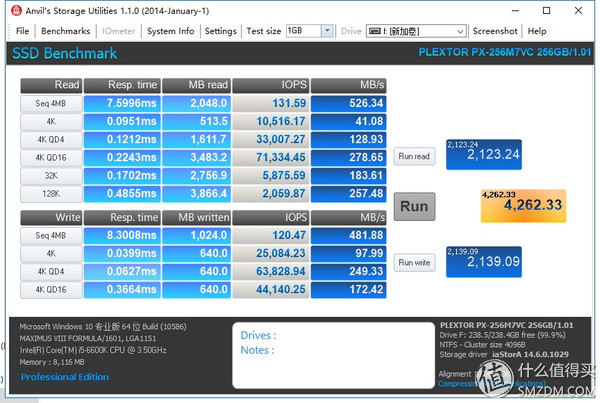
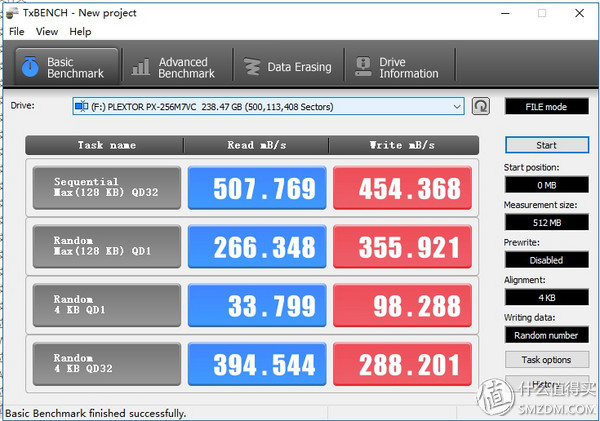
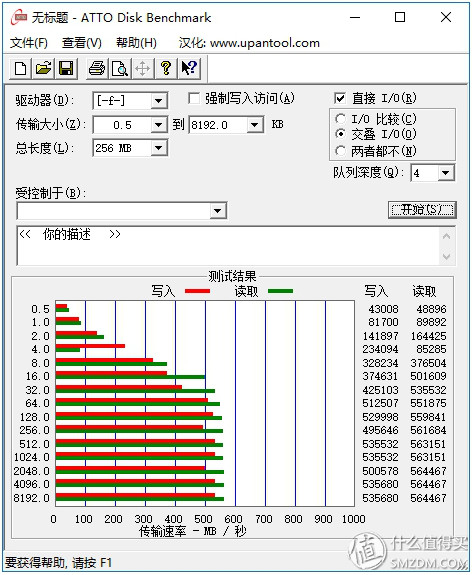
Since the test data modules of AS SSD Benchmark, Crystal Disk Mark, ATTO Disk Benchmark, Anvil's Storage Utilities, TxBENCH, etc., have a test data module size of less than 3 GB by default, the data reading and writing are all in the SLC Cache of M7VC. The results in the space, so the test results are very good, even more than most of the mid-range MLC SSD. However, these test results do not fully reflect the true performance of the M7VC 256G.
2, the buffer overflow test:
Previously on the M7VC 512G I've done a buffer overflow test, which is to increase the amount of data in the test software to exceed the size of the SLC Cache buffer to test the performance of a TLC SSD after a buffer overflow. Test results can better reflect the actual performance of the TLC SSD.
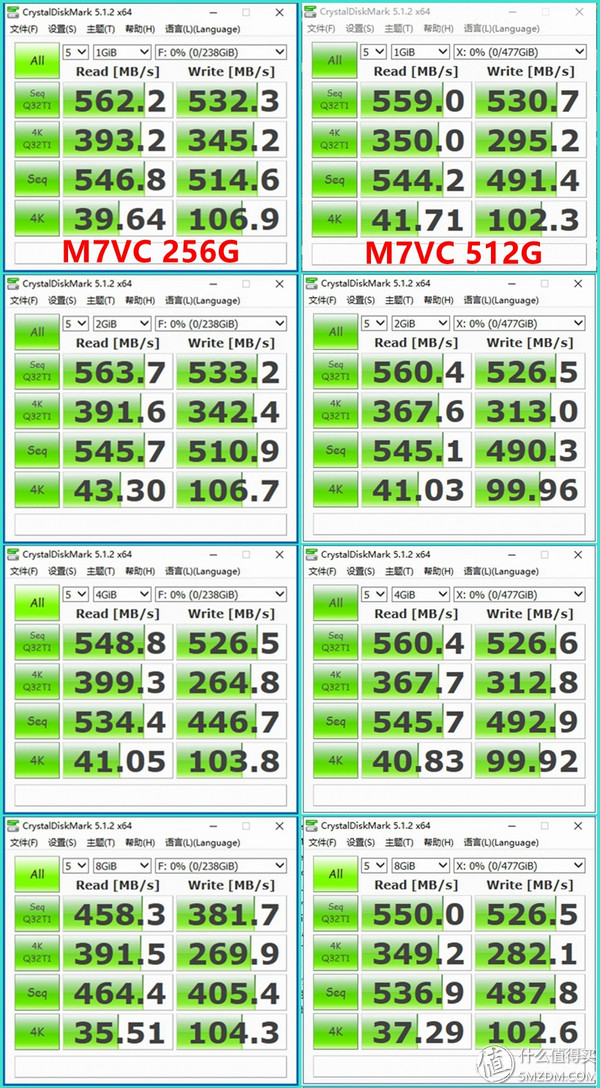
M7VC 512G version of the SLC Cache cache space is 6GB, 256G version of the SLC Cache cache space is 3GB, so in the CDM test, when the amount of test data is 4GB, 512G version of the performance change is not large, and 256G version because Buffer overflows occur, so deep queue random 4K write speeds have not dropped. When the test data volume increased to 8GB, the test scores of both disks had decreased. Because the buffer overflow condition was more serious, the 256G version had a larger decrease than the 512G version. From the comparison test, we can see that the size of the SLC Cache cache space is very important for TLC SSDs using SLC Cache technology. The larger the cache, the smaller the chance of a cache overflow causing performance degradation.
3. Simulate the actual use of environmental performance test The common test software can not completely reflect the performance of a TLC SSD in actual use even if the increase of the test data volume, PCMARK8 is the closest to the actual use of the environment simulation test software, which storage device The test part includes several items such as games, office work, and graphics processing. The amount of test data is about 50 GB, far exceeding the SLC Cache space of M7V. Therefore, the test results of PCMARK8 can reflect the SSD more accurately than the previous five tests. The actual performance of SSDs in normal homes, games, and small office situations.
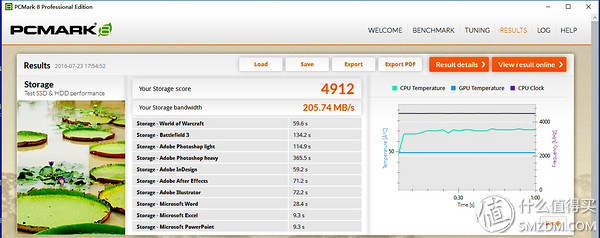
The final score of M7VC 256G PCMARK8 storage device test is 4912, which is almost the same as 4915 score of M7VC 512G. It is far beyond my expectation. Theoretically speaking, the larger the test data, the smaller the SLC Cache cache space will be. difference. However, in the face of dozens of gigabytes of big data, the gap between 3G's cache capacity seems to be very small. Anyway, they all have already crashed and have to rely on the main control chip to clear the cache. It can also be concluded that when the test data is less than 3GB, the 256G and 512G M7V SLC Cache are sufficient, so the performance is basically the same; and when the test data is between 3GB and 6GB, the 256G M7V has emerged Buffer overflow, and 512G M7V cache is enough, so 512G M7V is stronger than 256G M7V; when the test data is greater than 6GB, both versions of M7V have a buffer overflow, the beginning of the 512G M7V will be slightly stronger In 256G M7V, as the data increases, both caches are obviously not enough, so the performance gap between the two is not obvious.
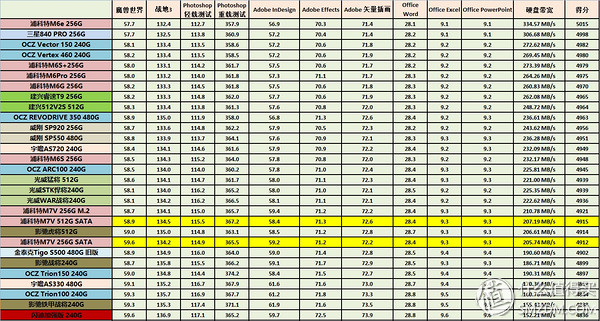
4. How to further improve the performance of TLC SSD From the previous tests, we can see that TLC SSDs using SLC Cache technology can achieve the performance level of mid-to-high-end MLC SSDs in common SSD performance test software, but in one case With large data volume and high load usage, such as PCMARK8 and other large test software, the performance of these TLC SSDs still lags behind most of the mid-to-high-end MLC SSDs. Here's a look at the difference between MLC SSD and TLC SSD. The test uses Plex Turbo's PlexTurbo software and uses system memory as a cache for SSDs to achieve system acceleration and reduce NAND writes. Previously, I measured the speedup effect of this software on the Plextor M6S+ and found that the performance of M6S+ can be improved to a small extent, reaching the performance level of the current mainstream PCIE NVMe SSD. However, this software has not been tried on TLC SSD. Generally, users who purchase TLC SSD are users who are concerned about the price or are not very budgeted. Therefore, I only use 1G of memory for the M7V cache, and finally use the Plex Turbo-accelerated M7VC 256G PCMARK8 memory device test score as In 4963, there was a much worse score than when using M6S+. It can also be concluded that although PlexTurbo technology uses memory as a cache for SSDs to improve test scores and user experience, not all tests are performed in memory, so there is a great relationship between the read and write speeds of the SSD itself. . If the performance of the SSD itself is already very strong, the performance improvement is even more pronounced after using PlexTurbo. If the performance of the SSD itself is more general, then using PlexTurbo to use the memory as a cache is not an immediate success, but only a certain degree of performance improvement. Therefore, we cannot deify the technology of using memory for SSD cache, nor can we completely deny it. PlexTurbo is also closely related to the performance of the SSD itself.
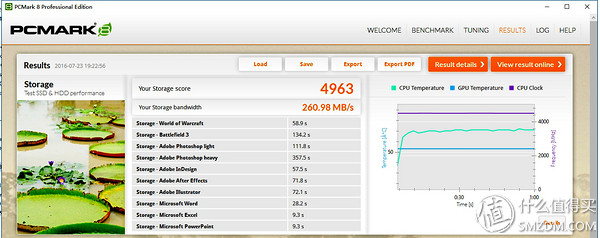
Test results summary:
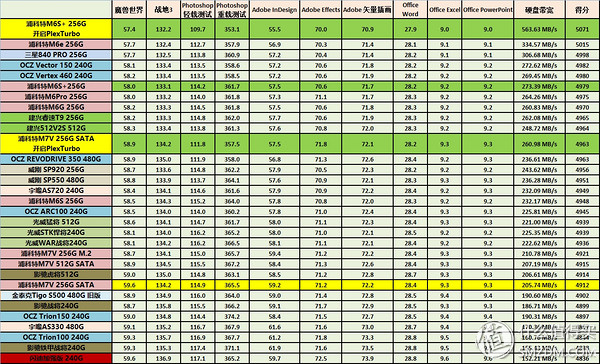
From the comparison of test results, it can be seen that M7VC 256G using PlexTurbo technology still lags behind M6S+ 256G and other high-end SATA3 SSDs that do not use PlexTurbo technology, but the score of 4963 also reaches the performance of mid-range MCL SSD. Level.
★ chief life home perspective ★
1. Most current mainstream TLC SSDs all use SLC Cache technology to speed up SSDs and improve user experience. However, depending on the technical characteristics and algorithms of different master chips, the performance boost that SLC Cache can bring is significant. s difference. Although SLC Cache technology has been around for a long time, several previous masters have not been able to optimize SLC Cache when targeting TLC SSDs. Recently, several newly released master controllers have made improvements in this area. According to the current data, the two main control SLC Cache technologies of Marvell 88SS1074 and Huirong SMI 2256K are the most advanced and reasonable, even in the data. In the case of a large amount of buffer overflows, relying on the processing power of the main control, the performance of the TLC SSD can still be maintained at a relatively high level, and the group S10 main control is relatively weak. Therefore, the two master control products of Marvell 88SS1074 and Huirong SMI 2256K should be given priority when purchasing.
Second, 120-128GB TLC SSD products, because the SLC Cache cache size is generally only about 1-1.5G, it is relatively small, but because of the smaller number of NAND particles, the overall performance is really poor. The 240-256G level product, the difference in performance and 480-512G level products is actually not large, are "sweet" products. So try not to buy 120-128GB TLC SSD products, increase the budget to buy 240-256G capacity products.
Third, many large brand TLC SSD products with a capacity of 240-256G are concentrated in the price range of about 380 yuan. The price of the Puket M7VC 256G is 459 yuan, slightly higher. If the difference between the 80 yuan is not worth it, we must analyze it in detail. From a performance point of view, the performance of the M7VC will be slightly higher than those of the TLC SSDs OCZ Trion150 and Apacer AS330, and will use the original Toshiba 15nm eTLC NAND chip, which will have a longer service life than ordinary TLC NAND. Based on these two points, 80 yuan difference is still acceptable. However, at present, the price of some low-end MLC SSDs with the same capacity is only 479-499 yuan, these products are mainly using ultra-low-end master + original MLC NAND like SMI 2246XT or SF2281 master + original or White chip MLC NAND products. M7VC compared to SMI 2246XT control products (such as SanDisk Plus), can be said to have a better performance, so it is worth buying. However, compared with SF2281 products, M7VC is not superior or even lag behind in performance. However, due to the intrinsic performance degradation of SF2281, there is still a possibility that M7VC can achieve mid-range MCL SSD performance after using Plex Turbo technology. This is one of the added values. I personally feel that the M7VC is still worth considering. Another point to share with you is that Marvell 9187 master inventory should still be very large, so there are a lot of manufacturers estimated to have entered a lot of 9187 master chip, and now need to inventory, so there are many 9187 master MLC SSD products are sold on promotional specials, such as some models of Toshiba and Lite-On. These 9187-controlled products are absolutely leveraged in performance. The 240-256G model of this part of the product, if the promotional price is around 500 yuan, is definitely more worth buying than any TLC SSD, so if you see a price cut, you must not shake it.
Original Bulb Lamp With Housing
The original projector bulb lamp with housing is installed with the original brand factory projection lamp, providing bright and clear pictures, visual appreciation, high quality and worry-free service. It can be directly put into the projector, the installation is simple, and no reassembly is required.
Original Bulb Lamp With Housing,Buy Projector Lamp,Projector Lamp Light,Original Projector
Shenzhen Happybate Trading Co.,LTD , https://www.happybateprojector.com